Turku Completes Ship Recycling Project
The Ship Recycling project at the Turku Repair Yard in Naantali in Finland has been completed.In the three-year project, funded by Tekes, six vessels were dismantled and recycled on an experimental basis. The background of the project is the EU Ship Recycling Regulation, which states that after 2018, EU-flagged or European-owned vessels can only be recycled on shipyards approved for that purpose.In the past, majority of the world’s fleet has ended up being scrapped in Asia under conditions that do not meet European safety and environmental standards. There is a growing need for sustainable ship recycling in Europe due to tighter requirements…
Ferry Sunflower is Test Bed for "Intelligent Awareness"
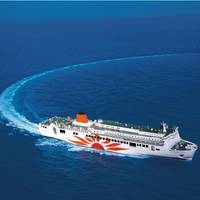
The maritime industry increasingly moves towards autonomy, and Rolls-Royce has been a major driver of the initiative globally. Today Rolls-Royce announced a deal with Japanese multi-modal transport company Mitsui O.S.K. Lines (MOL), to collaborate in the development of its intelligent awareness system. Specifically the intitiative will be trialled onboard the 165-m passenger ferry Sunflower, owned and operated by Mitsui O.S.K. Lines’ subsidiary company, which makes the 222-nautical mile run between Kobe and Oita via the Akashi Kaikyo, Bisan Seto and Kurushima Straits.
Rolls-Royce, Stena Line Partner on Ship Intelligence
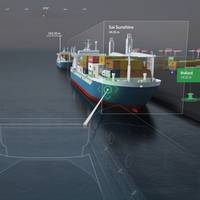
Rolls-Royce said it has signed a deal with Swedish ferry company Stena Line AB to collaborate in the development of its first intelligent awareness system. Intelligent awareness systems will make vessels safer, easier and more efficient to operate by providing crew with an enhanced understanding of their vessel’s surroundings, according to Rolls-Royce. This will be achieved by fusing data from a range of sensors with information from existing ship systems; such as Automatic Identification System (AIS) and radar. Data from other sources, including global databases, will also have a role.
Rolls-Royce Plots Further Ship Intelligence R&D

Rolls-Royce has announced the latest stage in its research and development plans to make remote and autonomous shipping a reality and reap the benefits of increasing digitalization in the marine industry. The company said it is looking to develop partnerships and opportunities with other organizations around the world to, create the capability, competencies and jobs to supply the technology and components required. Today, the latest part of that program has been confirmed with the announcement, in Finland, of a significant research grant by Tekes – the Finnish Funding Agency for Innovation.
Wärtsilä Takes Part in Autonomous Shipping Project
Wärtsilä’s strong commitment to developing the technologies, the system reliability, and the essential designs to enable the viability of autonomous shipping is again emphasised through its participation in an important research programme. Together with other leading marine sector and information & communication technology (ICT) companies, Wärtsilä is supporting a project aimed at creating the world’s first autonomous marine transport system. The initial focus will be on developing a fully autonomous system for the Baltic Sea by the year 2025, with cargo ships and freight transportation being the first pilot applications. The programme is being largely financed by Tekes…
Finland Funds Autonomous Ship Research
The Finnish government's innovation investment arm, Tekes, said that it is making a multi-year commitment to funding collaborative research and development of autonomous, unmanned ships to ply the world’s oceans in the not-so-distant future. Tekes said in a statement that this research area is a priority for the Finnish government and would contribute to the nation's competitiveness. "Digitalization has a strong role in the development of the competitiveness of the Finnish maritime cluster. Autonomous maritime ecosystem is a concrete action of Finnish digitalization strategy and Finnish Marine Industries envisioning," says the statement. The aim is to provide world's first unmanned maritime products, services and vivid ecosystem by 2025.
Rotor Sail Development Gets a €2.6 Mln Boost
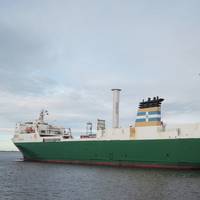
Norsepower Oy Ltd., the leading provider of low maintenance, software operated, and data verified auxiliary wind propulsion systems, has been selected to receive €2.6 million in funding to further its research and development of the Norsepower Rotor Sail Solution technology. The new models of the technology will include the world’s largest ever Flettner rotor. Awarded by the European Commission and the Finnish Government’s funding agency for Innovation, Tekes, the funding will be used by Norsepower to optimize its Rotor Sail Solution to deliver greater fuel savings and enhanced ROI.
Measuring Shipping Emissions in the Arctic
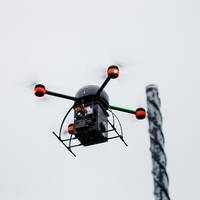
A new global challenge and a compliance monitoring market are emerging, due to tightening environmental regulations. VTT Technical Research Centre of Finland Ltd, the Finnish Meteorological Institute, Tampere University of Technology and the University of Turku have joined forces in an international project – Shipping Emissions in the Arctic – with the aim of making the measurement of black carbon emissions from shipping more reliable. The initial results show that engine loads and fuel types have a major impact on black carbon emissions from ships.
Unmanned Vessels: The Future is Now

There is a global boom in the development of unmanned systems, from below the ocean’s surface to high in the sky to the world’s roads. Add to this list the maritime industry, on both military and civilian vessels. Maritime Reporter & Engineering News examines in depth recent developments taking place in Europe to discover general thoughts and technical trends driving the future of unmanned shipping. The joint European Research Project MUNIN was finalized in August 2015, a project…
Autonomous Ship Project Gets Satcom Link
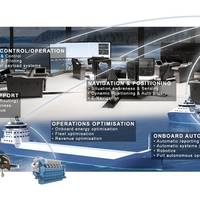
The Advanced Autonomous Waterborne Applications Initiative (AAWA), launched by Rolls-Royce and funded by Tekes (Finnish Funding Agency for Technology and Innovation), will bring industry partners together with universities, research institutes, ship owners and other stakeholders to explore the economic, social, legal, regulatory and technological factors which need to be addressed in order to make autonomous ships a reality. Participating in this project is Inmarsat, a provider of global mobile satellite communications services…
Rolls-Royce to Lead Autonomous Ship Research
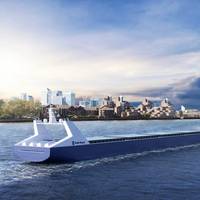
Rolls-Royce announced it will take the lead on a €6.6 million project that could pave the way for autonomous ships. The Advanced Autonomous Waterborne Applications Initiative will produce the specification and preliminary designs for the next generation of advanced ship solutions. The project is funded by Tekes (Finnish Funding Agency for Technology and Innovation) and will bring together universities, ship designers, equipment manufacturers and classification societies to explore the economic…
NAPA Streamlines Compliance with Class Design Rules
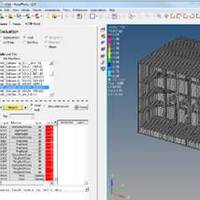
Global maritime software, services and data analysis company NAPA announced the release of new tools and interfaces with class society software to streamline ship design compliance with Common Structural Rules for Bulk Carriers and Oil Tankers (CSR BC&OT; formerly known as “harmonized CSR”) from the International Association of Classification Societies (IACS). Updates to 3D structural design software, NAPA Steel, and the release of state-of-the-art geometry modeling tool, NAPA Designer, will deliver a shift from 2D to 3D design requirements.
Harnessing the Wind for Auxiliary Propulsion
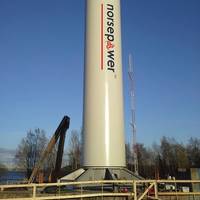
Finnish marine engineering company Norsepower Oy Ltd. announced that it will bring to the commercial maritime market an auxiliary wind propulsion solution aimed at maximizing cargo ship fuel efficiency, with first sea tests on a Finnish cargo ship slated to begin later this year. Norsepower’s Rotor Sail Solution is an updated version of the Flettner rotor, a concept that dates back to Finnish engineer Sigurd Savonius in the early 1900s. The Flettner rotor gets its name from German engineer Anton Flettner…
Langh Ship Develops Exhaust Gas Scrubber
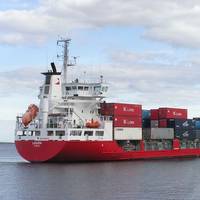
Although the sulphur limit for ship fuel in the North Sea and Baltic Sea is 1%, Langh Ship’s m/s Laura sails in the area with whatever fuel the charterer has found in Rotterdam, no matter how high its sulphur content. This is possible because the shipping company has equipped the vessel with a closed loop scrubber that emits exhaust gas that is even cleaner than if the fuel had a sulphur content of no more than 0.1%. Environmental regulations in this sulphur emission control area (SECA) have been tightened such that the sulphur limit for fuel will drop to 0.1% at the start of 2015.
Energy Efficiency, Vessel Versatility Central in Future Maritime Transportation
The future dry cargo vessel must be able to adjust quickly to changing transportation needs. The Finnish industrial production structure is anticipated to change and therefore maritime transportation ought to be tighter integrated to production chains. The cargo ship must be versatile and flexible as the transportation needs and cargo types may change within short time intervals. In light of energy efficiency, LNG is considered the best near future marine fuel alternative. These results are presented in three individual Master´s thesis produced at Aalto University. Based on a comprehensive analysis of the Finnish international maritime transport volume development and change factors of the industrial and operational environment, an optimal future vessel concept was established.
New Fatigue Model Leads to More Durable Ships

Heikki Remes, a researcher at the Aalto University in Finland, has developed a model making it possible to determine how fatigue sets in with various welded steel materials. The model allows for the development of lighter structures, and as a consequence, more energy-efficient ships. By utilizing modern manufacturing technology and new materials, it is possible to achieve more efficient structures than the ones that currently exist. In addition, better physical models are needed to ensure structural strength, Remes said.
New Fatigue Model Leads to More Durable Ships
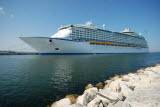
Heikki Remes, a researcher at the Aalto University in Finland, has developed a model making it possible to determine how fatigue sets in with various welded steel materials. The model allows for the development of lighter structures, and as a consequence, more energy-efficient ships. By utilizing modern manufacturing technology and new materials, it is possible to achieve more efficient structures than the ones that currently exist. In addition, better physical models are needed to ensure structural strength, Remes says.
Napa First Full-Scale Ship Flooding Tests
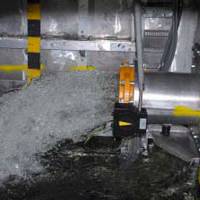
Napa Ltd is continuing its research into the physics of a flooding vessel; this effort is part of Ship Flooding, a national research project on progressive flooding and damage stability of ships being conducted in Finland. The other partners are the Finnish Naval Research Institute, Technical Research Center of Finland (VTT), Helsinki University of Technology (TKK) and STX Finland Cruise Ltd. The project is funded in part by Tekes (the Finnish Funding Agency for Technology and Innovation).
Kvaerner Masa-Yards Licenses Shipbuilding Atomation
cooperation partner Esab. opened a new era in the shipbuilding process. times have been reduced to zero and no CAD models are needed. technology allows even unmanned production (in night shift). record level arc and utility time ratios have been achieved. resulted in improved and stable quality and productivity. structures, not only for those of cruise ships. Automation Group Oy and Lappeenranta University of Technology. National Technology Agency of Finland. instead of off-line or pre-programmed systems. input from machine vision. components. high productivity and high return on investment. fabrication and sub-assembly.






